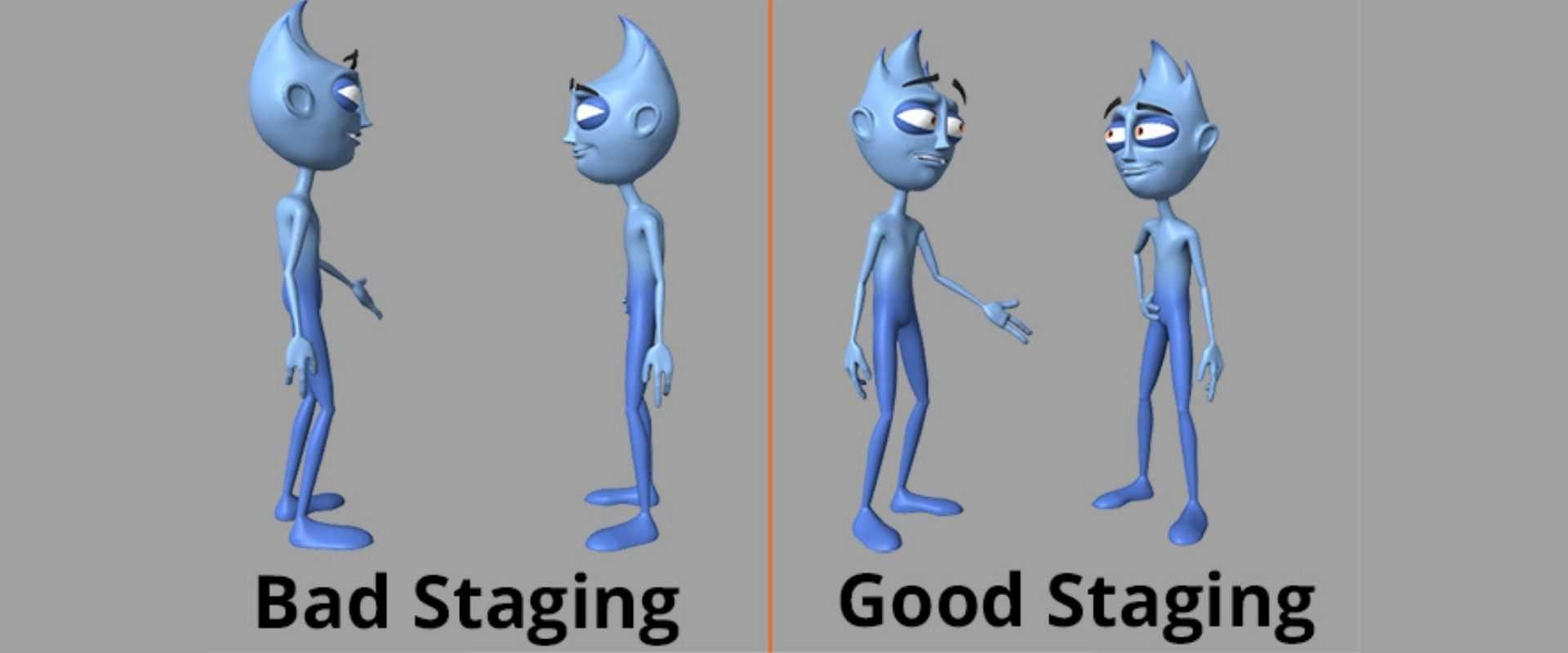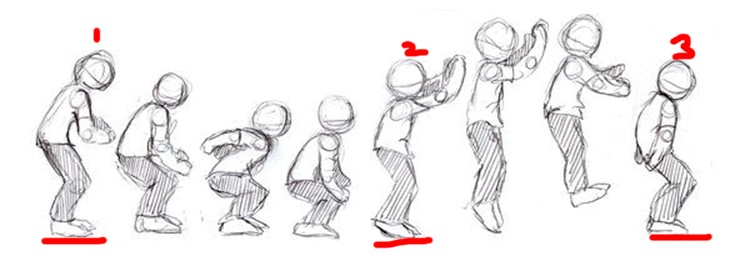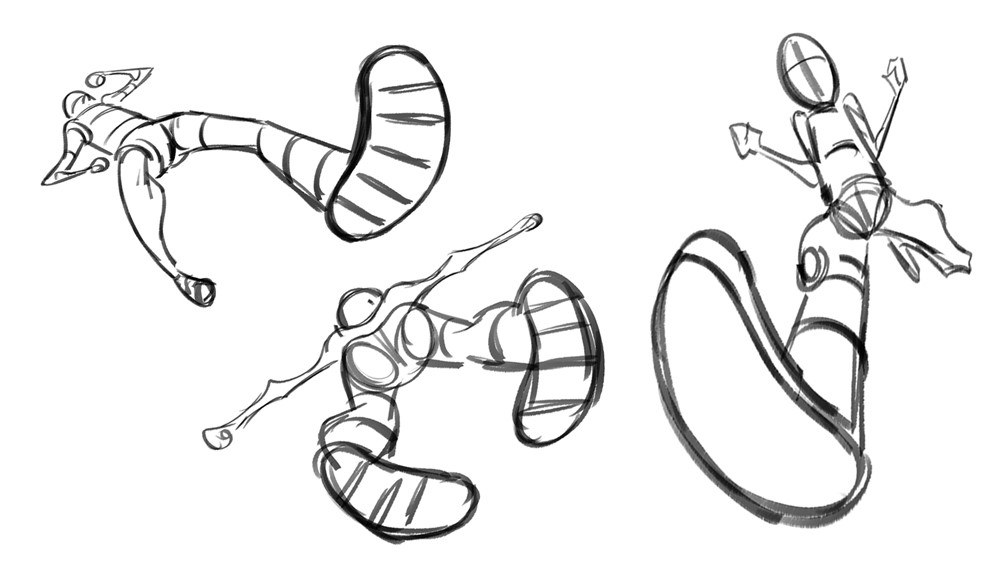I couldn’t have been more than four or five years old when I first saw the “Bambi” cartoon in kindergarten. Yes, I have cried my eyes off and was traumatized for life, but what made that animated movie so powerful are the characters that looked almost life-like.
Some of the people that made those characters come to life were Ollie Johnston and Frank Thomas, one of the original Disney animators. They ended up writing a book in 1981, called “The Illusion of Life: Disney Animation”. It was here that the 12 basic principles of animation were mentioned for the first time.
More than forty years later, these principles still stand as the theoretical bedrock for animators and those who aspire to become one.
What are the 12 basic principles of animation? Let’s find out!
- Squash and Stretch
- Anticipation
- Staging
- Straight Ahead Action and Pose-to-Pose
- Follow Through and Overlapping Action
- Ease In, Ease Out
- Arcs
- Secondary Action
- Timing
- Exaggeration
- Solid Drawing
- Appeal
Let’s examine these principles in more detail.
1. Squash and Stretch

[Source: design.tutsplus]
Squash and stretch is the fundamental principle of animation. It gives a sense of flexibility and life to animated objects.
The best way to understand this principle is to imagine a ball bouncing off the ground. Just as the ball touches the ground, it becomes flatter which emphasizes the speed and weight of the ball. This is the squashing effect.
Stretching begins when the ball starts to bounce off the ground.

[Source: design.tutsplus]
These motions are often purposely exaggerated to give animations more interesting and fun appeal. However, without applying the squash and stretch principle, animated objects can look static, almost unnatural.
2. Anticipation

[Source: deedeestudio]
The anticipation principle subtly indicates that something “new” is about to happen and propels us to keep watching to see what. Some examples of anticipation in animation include:
- A baseball player who is just about to hit a ball
- A character that is just about to fly off the ground
- A compressed string just before stretching
- The body momentum right before jumping
The anticipation principle in animation feeds the characters with more liveliness and energy and gives the whole animation dynamic touch.
3. Staging

[Source: darvideo]
The staging principle in animation serves to guide the audience’s attention and emotions by setting a mood and positioning characters and backgrounds in a certain way.
Animators use this principle to keep the focus on what they want to communicate to the audience. It’s just like when a film director has to position a camera at a certain angle and tell the actors where to stand and what emotions to express so that the scene conveys the intended message.
4. Straight-Ahead Action and Pose-to-Pose

[Source: philnews]
Straight-ahead action and pose-to-pose represent the two ways of drawing animation. The first one suggests drawing an action frame by frame as you go along. While the pose-to-pose approach indicates drawing the key poses first (usually the first, middle, and last movement of the action) and filling in the rest of the animation.

[Source: philnews]
5. Follow Through and Overlapping Action

[Source: pushed]
The follow-through principle indicates that some parts of the animation continue to move after the character has come to a stop. Think of the superhero landing and how their cape continues to float in the air while the character is already on the ground.
Overlapping action makes the character move across the screen, while some parts of their body move before or at a different speed than others. 
[Source: animation2012]
6. Ease In, Ease Out

[Source: 360south]
When an object is set in motion, it doesn’t just start moving. It starts from a standstill position and speeds up from there. The same applies when an object stops. It doesn’t stop immediately but rather slows down gradually until it reaches a standstill position.
Ease-in and ease-out principles in animation follow these laws of physics to create a more natural movement of characters and objects.
7. Arcs

[Source: animationmentor]
The arc principle in animation aims to follow the visual path of an object in action. This principle can be applied to any activity such as the projectile of a bouncing ball, the route of a moving arm, the movement of mouth corners while in a dialog, etc.
The idea is that animation should follow the natural flow of an object or character in movement.
8. Secondary Action

[Source: darvideo]
Secondary action in animation serves to emphasize the main action or give more depth to the character’s depicted mood. Think of a sad character and add a dark cloud above their head. The cloud would be a secondary action that serves to enhance the feeling of sadness.
9. Timing

[Source: toonboom]
The timing gives the objects and characters real-like movements by following the laws of physics. Timing in animations is the number of frames between two poses. But doesn’t only dictate how fast the action will move, it also serves to depict the characters in more detail.
For instance, if the animated character is energetic, they will move faster. While the lazy character will have slower movements.
10. Exaggeration

[Source: nutchelleblog]
Exaggeration in animation is used to add a more comic or dramatic effect to a character. Every time we see a character’s heart beat out of their chest or their eyeballs rolled out of the head, we witness an exaggeration for comic effect.
The exaggeration in animation is what makes the cartoons fun and appealing to watch.
11. Solid Drawing

[Source: dsource]
Solid drawing gives the characters and objects more depth, making them appear three-dimensional. It is one of the hardest principles to master as, an animator needs to pay attention to the weight, volume, and balance to achieve a believable 3D look.
12. Appeal

[Source: dsource]
Essentially, the appeal principle in animation makes characters likable and relatable, but also unlikable and unpleasant. It dictates how we should feel about a certain character.
For instance, appel in animation will make us think of Sponge Bob as an annoying but pure-hearted character, Squidward Tentacles as grumpy, Sendy Cheeks as smart, Plankton as evil, and so on.
Closing thoughts
If you planning on taking up animations to be your new career or a hobby, understanding the 12 principles of animation is a great place to start before you move on to art tutorials and drawing.
Hopefully, this article was just what you needed to get started on your new and exciting journey of making captivating animations. And maybe someday your animated movie will make a five-year-old cry, or better yet, laugh.


No comments yet